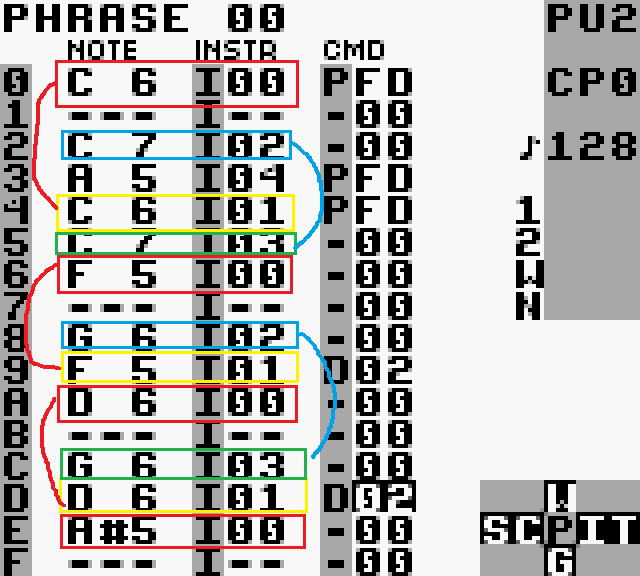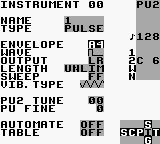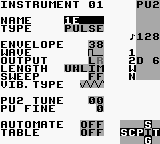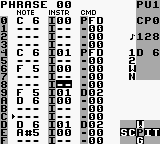It's also fun to experiment with the location of the echos. Much later, or directly after.
If a melody is more complex, and following the above example means putting an echo on a lead note, then you can sneak it in just beforehand, and try using a Dxx command to delay it so it starts ALMOST when it should, but gets cut off by the next note. Or, you can put the note after the next lead note, which would fall on the step that you would have had an echo, again, using a Dxx command to fit to taste. Or simply lose that echo entirely
examples here
forgive the small image size, i took screen caps from VBA.
First, here is your "complex" melody.
Actually, its just a melody that will cause problems using the delay of 4 steps, or could cause those problems
here is a solution to that problem. The delay is not exactly equal, but because its close enough, the ear shouldn't mind. You can increase the Dxx value if you are a stickler, but without enough length, the echo won't sound effective. You can tailor it to your own ear though.
You can also overlay a 2nd melody, with a 2nd set of echoes, as you see here. I have opted not to use the Dxx command on the 2nd set of leads/delays because I actually just forgot to, but the notes with instrument 03 should have a D02 command on them, or some Dxx value.
NOTE:
on line 0, there is a C-6 note.
on line 2, there is a very short note with envelope A1. It cuts off the note on line 0. However, the note on line 0 has a longer envelope, and should still be heard at this point (if it were 2 channels, you'd still hear that first note playing)
SO. On line 3, there is a note continuing that Pitch bend. It is at a lower volume (following the envelope set at step 0) and at a lower pitch (following the PFD command on step 0). THis is optional, i liked how it sounded, but you dont' have to use it. You can do whatever you think sounds good to you.
and to make it more clear what is going on, you can see here (in this horrible png) that the red notes are followed by yellow echoes, the blue notes are followed by green echoes. 
Here are the instruments
Lead 1
Echo 1 (panned left)
Lead 2 (panned right)
Echo 2 (panned right)
The result is two distinct instruments (on two separate octaves, with 2 separate pulse widths, panned separately) that should be distinctly heard
The general idea in this is that your echos dont' have to be precisely the same at all times. You can even abandon an echo if there's no way to fit it without sounding bad, or cutting off a note early that youw ant to keep ringing. below is the audio of this example. I hope this is helpful. This is by no means the only way to do things, but it should give you some ideas to try things on your own.

